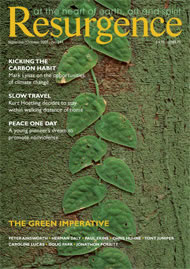EDWARD LUCIE-SMITH has written an eloquent and generous introduction to this book. He makes salient points about some of the themes that emerge from the conversations the artists have with John K. Grande. “Science increasingly explores the profoundest sources of life; a process that seems to break down many of the barriers between exploration of the world as this is understood by artists and exploration undertaken by scientists.” Also, “in many of the non-European, non-American societies that have begun to make art influenced by modernism, there is no market for contemporary art… ‘Trade art’ of this kind is not an entirely new phenomenon…[it] treads a line between the authentic and the compromised.”
These are consequential thoughts and observations which seized my interest at the beginning of this book. There are two more introductions, the first by F. David Peat and the second by Grande himself. Grande asserts that Dialogues in Diversity will provide readers with “a broad range of source material to extend their understanding as well as raise questions regarding the direction of contemporary art”. This is no small claim with which to start the dialogues.
His choice of artists is catholic. Amongst them are the well-established like Bill Woodrow, Christo and Jeanne-Claude, and Antony Gormley, and the less well-known Chris Booth and Cai Guo-Qiang, as well as Anna Torma and Yolanda Gutierrez, both of whose work was unknown to me. These two women are joined by Guerrilla Girl ‘Frida Kahlo’, and the three of them extend the media covered by the book in a substantial way. Of the seventeen artists included in the dialogues, two work in partnership (Christo and Jeanne-Claude), and three are women artists. With a title which heralds diversity this lack of gender balance seems unfortunate.
Of the chosen artists there is a curious European and American bias. India is unrepresented, as are Africa and the countries of the former Soviet Union and central Asia, Australasia and Indonesia.
The dialogues reflect the artists’ engagement with Grande and his understandably uneven ability to act as a catalyst. The responses from Christo and Jeanne-Claude are crisp; curt even. Others he draws out sympathetically and nudges their explanations and thoughts into useful completeness.
In a review of necessarily limited length it is not possible to mention all the artists. Some, like Bill Woodrow, shine through. His honesty in the re-use of discarded objects from our material world witnesses their origins and celebrates what they are made of. He encourages us to continue imagining.
You can almost feel Peter Randall-Page squirming at Grande’s description of the “sacred geometry” of his work, and he retorts, “The universe we live in has certain fundamental rules about the way things fit together. We are part of that universe and predisposed to recognising pattern” and “There is a limited ‘pattern book’ of basic ways things fit together in our universe… These themes may be limited but the variations are infinite.”
The artists are introduced by useful short biographies; the exception is the dialogue with Ousmane Sow. Grande declares Sow’s work “silent and visionary” and claims Sow “dared to dream another freedom” (casting into bronze!): “Sow the master…responded to his initiation ethic”! This is by far the oddest interview in the book. Sow says, “It’s good to sell work, but the truth is I’ve always been against it.” Grande bigs him up with “Your sculptures are eternal” and “You follow life in a way that is bigger than nature itself.” In short it is an embarrassing read and I had to take a break before willing myself to go on with the rest of the book, which is much better.
Antony Gormley, Chris Booth, Cai Guo-Qiang, Patrick Huse, Francisco Gazitua, Anna Torma, a Guerrilla Girl, Roy Stabb, Ed Burtynsky, Yolanda Gutierrez and Brandon Ballengee rescue the rest of the book with primary quotes. When their voices are left to speak without loaded prompts the book does work as a useful resource.
The other quirky inclusion is Nadalian, an Iranian sculptor whose carved work intervenes with nature, cutting prehistoric-influenced images and zodiac signs into river rocks and sea stones. Like Randall-Page’s split stones in the Teign Valley in Devon, they would make magical and mysterious finds.
Overall this book is inconsistent. It falls short of meeting Grande’s claim that it “will provide readers…with a broad range of source material to extend their understanding as well as raise questions regarding the direction of contemporary art”. There are flashes of light and flashes that come directly from the artists but it is an uneven text. You might like to dip into it and see for yourself.







